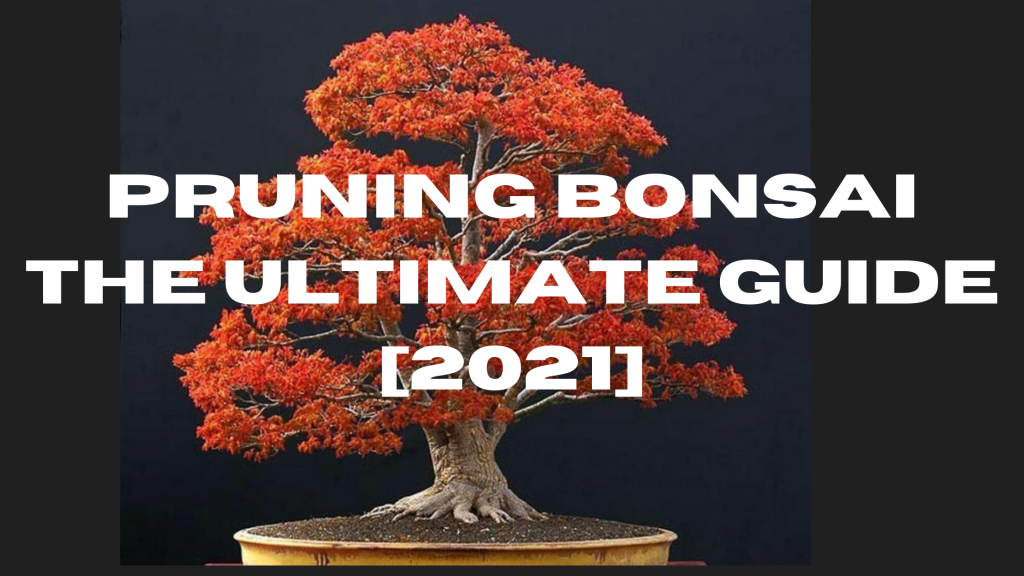Pruning Bonsai: The Ultimate Guide [2021]
Pruning bonsai is an important part of maintaining your tree. It helps to keep the shape, size and health in check for both you and your tree.
There are many ways to prune a bonsai but we will focus on the easiest way that gives you good results with little effort. Pruning should be done as often as necessary so it becomes second nature!
If you find yourself struggling with overgrown trees or want some advice on how frequently to prune a bonsai, we answer your questions here.
Bonsais require regular maintenance including pruning which can help keep them healthy and beautiful.
Let’s go through:
- how to prune a bonsai tree
- what tools are needed to do this properly bonsai pruning shears vs bonsai pruning kits),
- how much time it usually takes
- discussions on pruning specific types of bonsai trees
How to prune a bonsai tree?
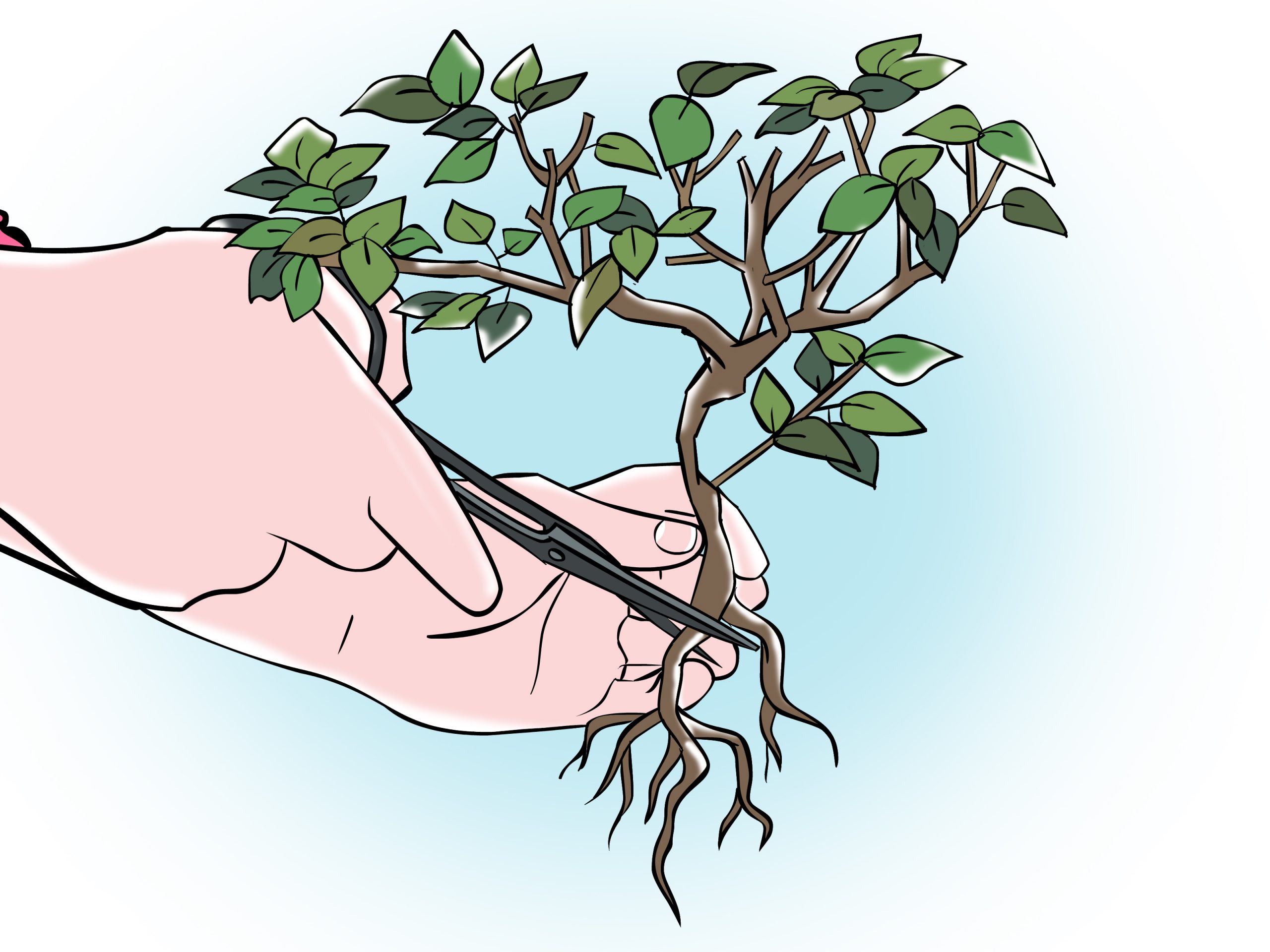
Pruning is a must-do routine maintenance procedure of keeping your bonsai in tiptop shape.
It can be an enjoyable and relaxing activity, so don’t think you have to rush it or worry that it will be hard work!
1.) The primary purpose of pruning is to remove dead leaves which can affect the growth of new ones.
2.) The secondary purpose is to cut away part of the tree or branch that may be growing too large for its allotted space. It can also be used to create new growth in a bonsai if you know what you’re doing!
While I am sure there are many methods out there, this post will focus on the easiest way to do it and in my opinion get the best results.
Many people have been taught to use pruning scissors but I don’t think this is the right way!
They can be fiddly and it can be hard to cut precisely, which can lead to an unbalanced tree in a few years because you didn’t allow enough room for new growth.
For me, using a small sharp knife is the best way to prune a bonsai. This lets you cut more precisely and quickly, leaving less room for error.
How often do you need to prune?

For the majority of species, from spring to autumn would be ideal but seasonal variations in temperature will tell you when it’s time!
It’s important not to prune your bonsai too much or they will lose their shape. You should be able to see that the tree is growing well without having to prune every month!
Do different types of bonsai trees require different pruning?
The majority of conifers will have a similar pruning routine. There are some exceptions. Japanese White Pine tends to lean if it grows too large. Extra care may be required while pruning to correct this.
Sometimes though, a tree begins to grow unevenly so you need to remove more wood from the top or bottom. This is a common issue with Cherry and Juniper.
How to cut a branch?

Cut the trunk or branch at a sharp angle of around 45 degrees , ensuring you leave enough wood to be able to seal it later on.
Avoid cutting too close to the main trunk or it will likely die off completely, ruining your tree!
I tend not to cut off more than one layer of branches. If it is too long then cut a section from the bottom and leave the rest.
How much time does pruning a bonsai take?.
A complete bonsai pruning
Pruning can be done in a few minutes but it’s an important part of your maintenance schedule so this time will add up!

I would recommend spending around 15 to 20 minutes each month on this routine task.
A bit like washing the car; it shouldn’t take long and you’ll feel better afterward.
A complete bonsai pruning for a small tree might take around 15 minutes. Taking off all the old leaves on a large tree can be done in less than 10 minutes!
But what if you don’t have that much time?
Try limiting yourself to removing just the biggest and oldest leaves. Make sure they are dry too, because wet ones may fall apart when you try to remove them.
How to remove the old leaves from a bonsai tree?
Chop away at the base of the leaf with your knife until it falls completely off. Never pull or tug as this can damage the branch!
Make sure that you don’t accidentally cut into any branches while doing this, although sometimes an extra hand is useful if it’s a big leaf.
What to do with the clippings?
Once you are done, pick up all the bits and pieces left over and put them in a plastic bag for future use!
These can be used as starter fertiliser or even thrown into your compost bin. Anything that is still usable will be broken down by bacteria. You can even throw them on your soil to speed this process up!
If it’s too late in the year and you are struggling for time, just bag them up and leave them in the compost bin until next season. They will be a welcome treat for your plants when you use them then!
How much should I prune?
In general, you should only be pruning around 5% of your tree every time.
This will allow for plenty of new growth and keep it healthy at the same time!
So if your tree is two years old then this means that after four years of pruning, everything above ground will have been removed.
However, pruning heavily depends on the species. For example, a fast growing tree like Japanese Black Pine would benefit from having 70% of its branches pruned away. Slow growers like Cryptomeria require very little pruning.
What if you cut your tree leaving a wound?
How to seal wounds?
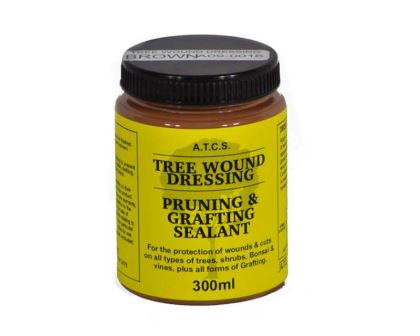
After cutting your branch at an angle (around 45 degrees) be sure to seal it! This is one of the most important steps of the pruning process.
If you do not seal your cuts they will likely suffer from infection and decay which could kill off the branch or even the entire tree!
There are many different materials used for sealing including:
Liquid Wax – Best used for small cuts, it is very viscous so tends to ooze out. Dip a cotton bud or brush into your can of wax and rub it over the cut.
Pine Tar – This is commonly used for hard wood pruning (e.g many kinds of conifer) and will seal off your cuts very well.
Tree Gum – If you cannot get any Pine Tar, then tree gum is the next best choice.
I personally use a mixture of Pine Tar and tree gum because they work perfectly together, but this is more expensive than just using straight pine tar.
Also make sure you get the kind that contains turpentine as it will kill off any fungus on your cuts!
Tree Gum should be used for soft wood pruning (e.g bonsai with deciduous leaves) as it is less viscous and more malleable.
I would recommend using a combination of these gums, dabbing them on one by one to make sure that none of your cuts are left without protection!
Pruning bonsai root
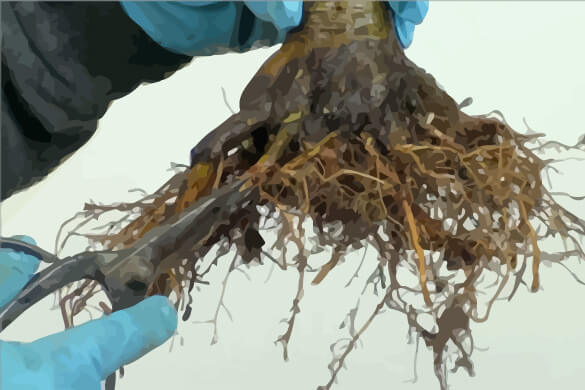
This is one of the least understood aspects of bonsai. But it really should be first nature for every experienced grower to know how to prune their trees roots!
And if you don’t then I certainly think it’s worth learning about now, especially as many species like Japanese Maples tend to grow new roots from the base of the old ones.
What do I do with old roots?
Firstly, make sure that they are not healthy or alive!
If they have any green on them then you should leave them alone and prune from a higher point down.
Healthy trees will usually still be producing root growth so this may be your chance to produce a more interesting nebari (surface roots).
How do I know where to cut?
The easiest way is simply to count the number of visible rings on the root. The ones closest to the trunk will need pruning as these are older and compete with new growth.
This means that they can sometimes pull water away from them or even prevent them from growing through the soil.
If you have Japanese Maple, then this method won’t work. They seem to produce new roots anywhere along their length – such is the way with Maples!
But if you have deciduous bonsai like a Chinese Elm or Beech then it’s still worth using this technique. It will give you a chance to create a wonderful jin (branch stub) on the trunk.
Usually, this happens naturally as your tree gets bigger – but don’t leave it too late!
Be sure to prune your roots when they’re around 3-4 years old and natural jins should already be forming all over the trunk in a youthful bonsai.
However, if you have a tree that does not yet have jins (or even many roots!) then they will just need pruning from the bottom up to create them!
Prune until you see green, but be careful not to cut too close to the trunk as this can lead to problems with decay and bacteria.
If you’re not sure what to do then just remember that in most cases your tree roots will need pruning.
This is done at or below the point where they emerge from the pot (if they don’t, then this is a sign of over-pottedting and too much soil).
Dead roots on your bonsai tree
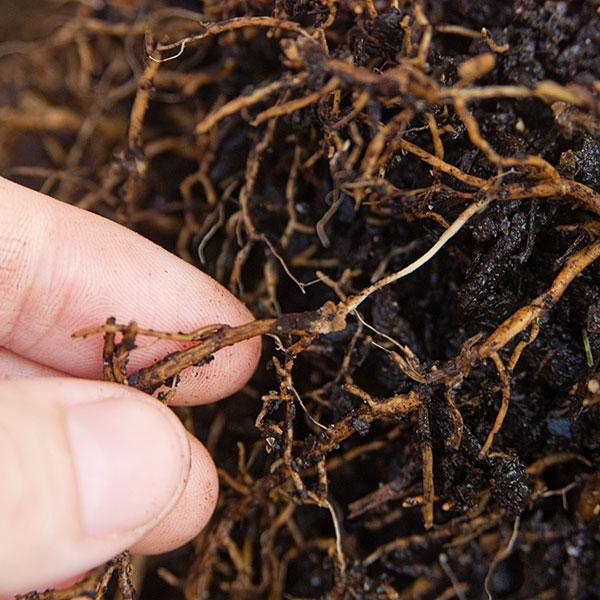
Yes it happens – and yes it can kill your tree! But it isn’t always the case and certainly not in young bonsai.
The best way to tell whether roots are dead or alive is by cutting into the base of them. If they look brown, crumbly and rotten then you can be sure that they’re dead.
However, if your roots are still white (and in most cases they should be) then you will need to prune them carefully from below. Roots should be routinely pruned every year, just like branches!
As a rule of thumb try not to leave more than four or five visible rings on your roots.
If you’re not sure where to prune them then just remember that if you can’t see any green at the base of your tree roots, then they will need pruning from below.
It’s much easier than doing it from above and is the best way to avoid rotting or damaging new growth!
Pruning bonsai for beginners
Let’s take a look at bonsai pruning for beginners.
I know it sounds quite daunting but believe me – once you’ve pruned your first tree then it will all become clear and even exciting!
You may find that as you progress through the ranks of enthusiast, intermediate and finally expert bonsai gardener that you’ll need to master a whole new range of pruning styles for advanced bonsai.
I know that there’s nothing quite like the first time you cut your trees roots or branches. And not just because it is one of the most important parts of caring for your tree – but because there’s something quite thrilling about seeing it take shape and grow to your own specifications.
And, the best part of pruning bonsai is that you’ll get to do it every year!
Pruning bonsai ficus
This is a tricky one as most bonsai growers want to avoid excessive pruning of ficus, but sometimes it’s just the best thing you can do.
Ficus are extremely sensitive to their environment and often need a lot of TLC – so don’t be afraid to prune them when they’re young!
I have seen some bonsai growers that specialise in ficus, and they all seem to have slightly different ways of pruning them. The best thing is to watch them work or even ask for advice!
Some thrive on a very severe pruning regime – one that would leave you quivering in your boots!
But surely no harm is done? I often see bonsai growers pruning back ficus branches to just a single or two live buds. I’m not sure if they’ll die, but surely this can’t be good for them?
Pruning a ginkgo bonsai
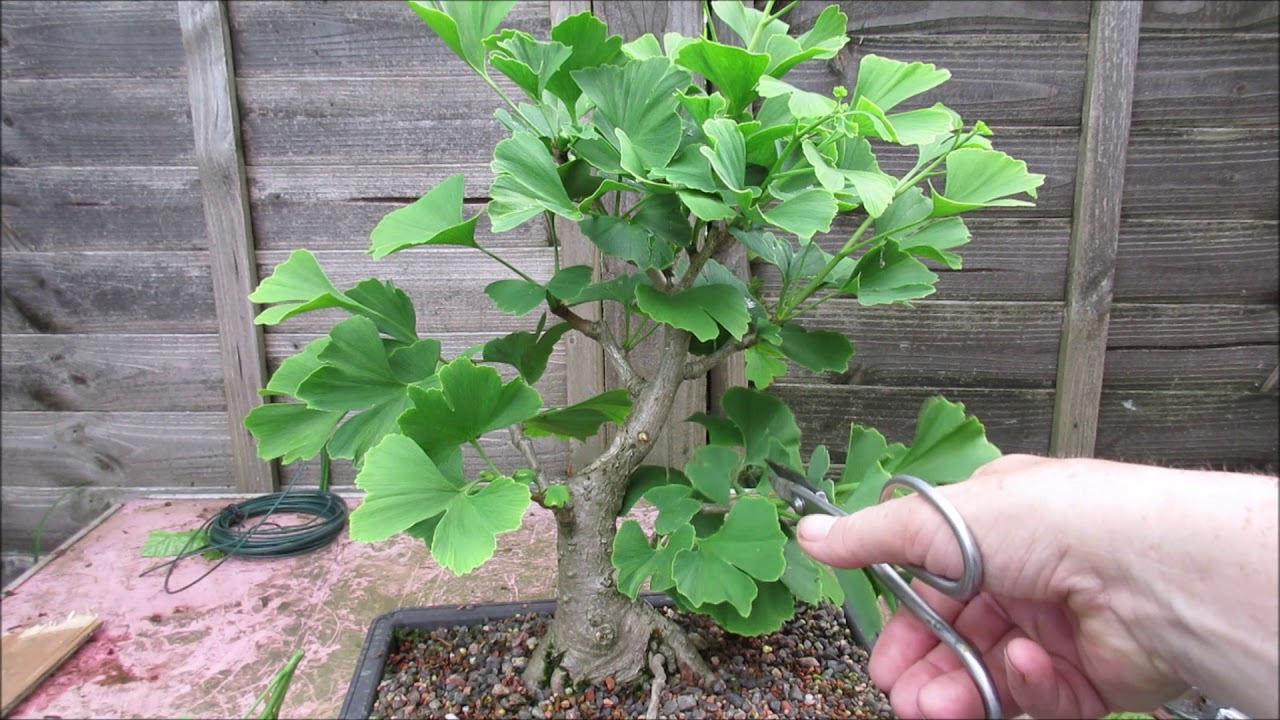
Ginkgo bonsai are well known for their wonderful autumn colour, but they’re also equally tricky to care for.
They seem to be at their best once completely covered in leaves, so it’s often difficult to prune them if you’ve left it too long – because once the leaves start falling there’s nothing left!
However, if you’re still after a showy bonsai, then it’s worth letting your Ginko grow as big as possible – so that there’s lots of leaves on the branches.
So let them reach their full size and then prune back hard!
Leave just a few short branches with small buds on them, or even no more than a single bud.
This will create a new flush of leaves and let the Ginko keep growing. It’s important to remember that you’ll also need to protect your bonsai from insects, mites and other pests with chemical sprays and insecticides.
Ginkgo pruning is no walk in the park! It takes lots of practice to get the balance right and you’ll be left with lots of stubs! So bear in mind that your pruning may not always work out as planned – but you’ll learn along the way.
Pruning dawn redwood bonsai
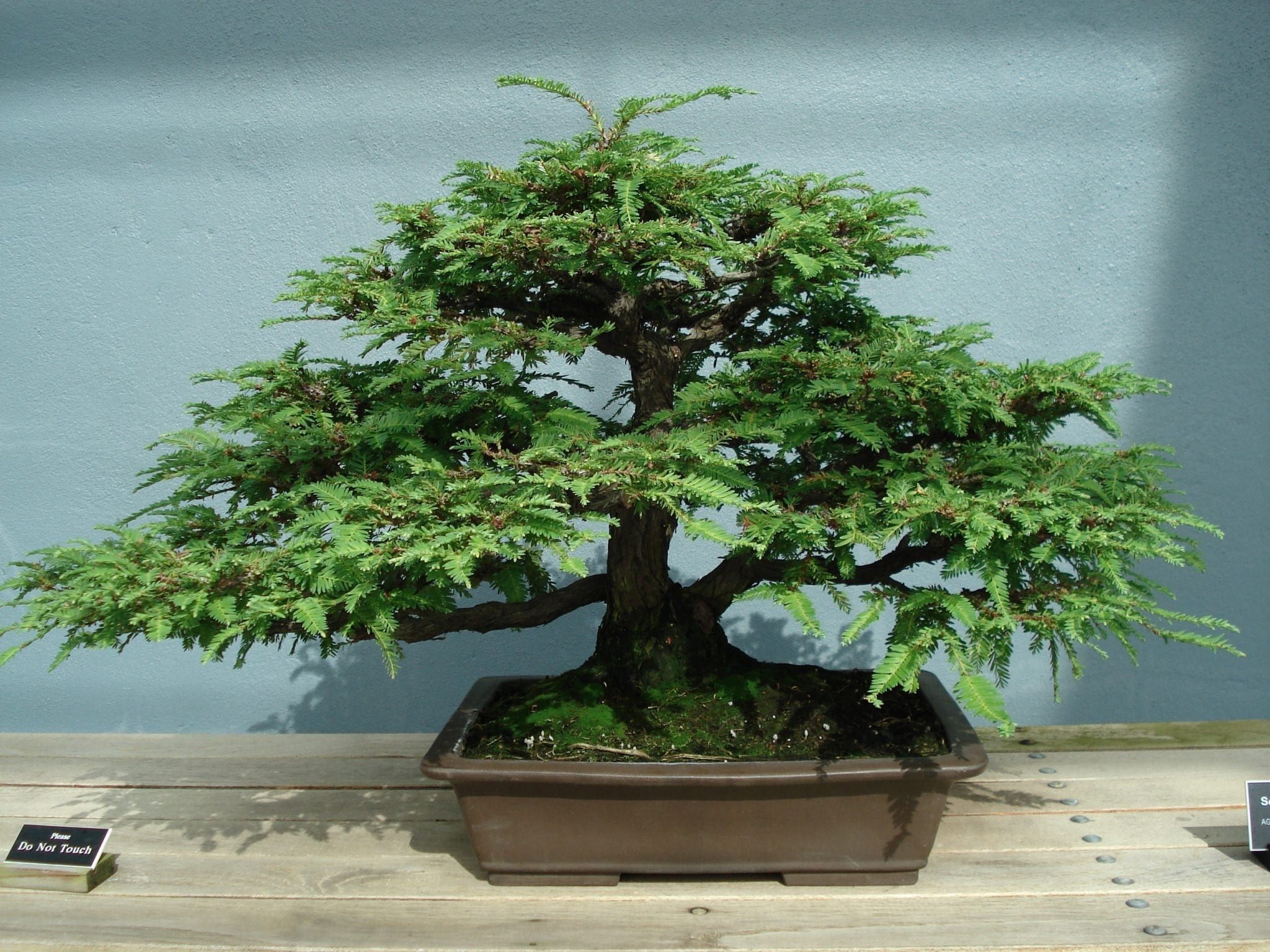
Dawn redwood bonsai are more like a practice in patience than the perfect bonsai. They have lovely leaves and need to be pruned carefully to keep them looking good as their trunks grow very slowly!
Instead of chopping back fully, it’s often better to just trim across the tips of new growth to create a “cascade” effect.
This helps to keep your bonsai looking good for longer and it’s also an ideal way of encouraging strong growth at the tip of branches instead of just letting them grow all over the place!
In short, try trimming across the tips so that they don’t bulk up too much. It will give you a neat and tidy bonsai that will grow very quickly in just one or two seasons.
Many people seem to leave them for much longer than they should before pruning dawn redwood bonsai, so remember this advice: try not to let your leaves get too big.
If you’ve left it a bit late then don’t be afraid to prune your bonsai down hard- sometimes it’s the things you learn from mistakes like these that are the most valuable.
Pruning Japanese maple bonsai
Japanese maples are a classic choice for bonsai but they naturally grow into beautiful shapely trees, so if you want to turn them into a bonsai then you’ll need to prune them back really hard.
You can’t just leave them alone for a few years and expect a perfect looking bonsai!
They’re sometimes difficult to grow indoors, but it’s important not to be afraid of extreme pruning. If you want your Japanese maple to look good and have that high quality Bonsai look, then get snapping with your pruning shears.
Cut the suckers off in summer and chop back new growth when needed.
You’ll be left with tiny stubs that don’t always seem to grow back – but this is normal!
I have one Japanese maple bonsai that grows into a perfect tree shape each summer, but only after hard pruning.
I have to bravely cut my way through lots of new growth each year and it takes quite a long time to build up the bonsai – but it’s worth the work.
So if you’re ready for some serious pruning then go for Japanese maples every time!
Pruning pomegranate bonsai

Pomegranate bonsai are beautiful trees that bloom in the spring with big white flowers. They’re very decorative and look great in a living room, but they can be temperamental to grow indoors and need regular pruning if you want them to look good!
The trick is not to let them grow too much. Try trimming off leaves regularly and just let them grow at the tips of branches. This will encourage lots of new growth, but keep the overall shape looking good.
Pomegranates are quite challenging to grow indoors, but they’re also fun to prune! You can chop back almost all of their thick branches if you’re careful with your cuts – try to avoid damaging the trunk to keep your pruning going smoothly.
The branches can be awkward to sort out, but once you’ve got to grips with this bonsai then it’s worth all of the hard work! Some people even spray paint their pomegranate bonsai for added effect – I’d rather not risk that one though.
Bonsai pruning kit
Yes, you can buy a bonsai pruning kit! Some of them do actually have more than one tool and look pretty good.
In fact the best ones feature a branch snipper (which is essential) plus some scissors, loppers and other miscellaneous tools that together with your hands will help you to tackle any job.
Now, if you are looking for the best product on the market then I recommend that you check out this one: Bonsai Pruning Kit
It is made by a very experienced bonsai grower and he has put all his experience into making sure that this product is right up there with the best of them.
If you have any doubts about it, then you may like to read some of the reviews for this product. I would say that these are in their hundreds!
What I have noticed is that most who review this product seem to give it top marks and they also say a lot about how effective it is and what good value for money it is.
Bonsai pruning shears
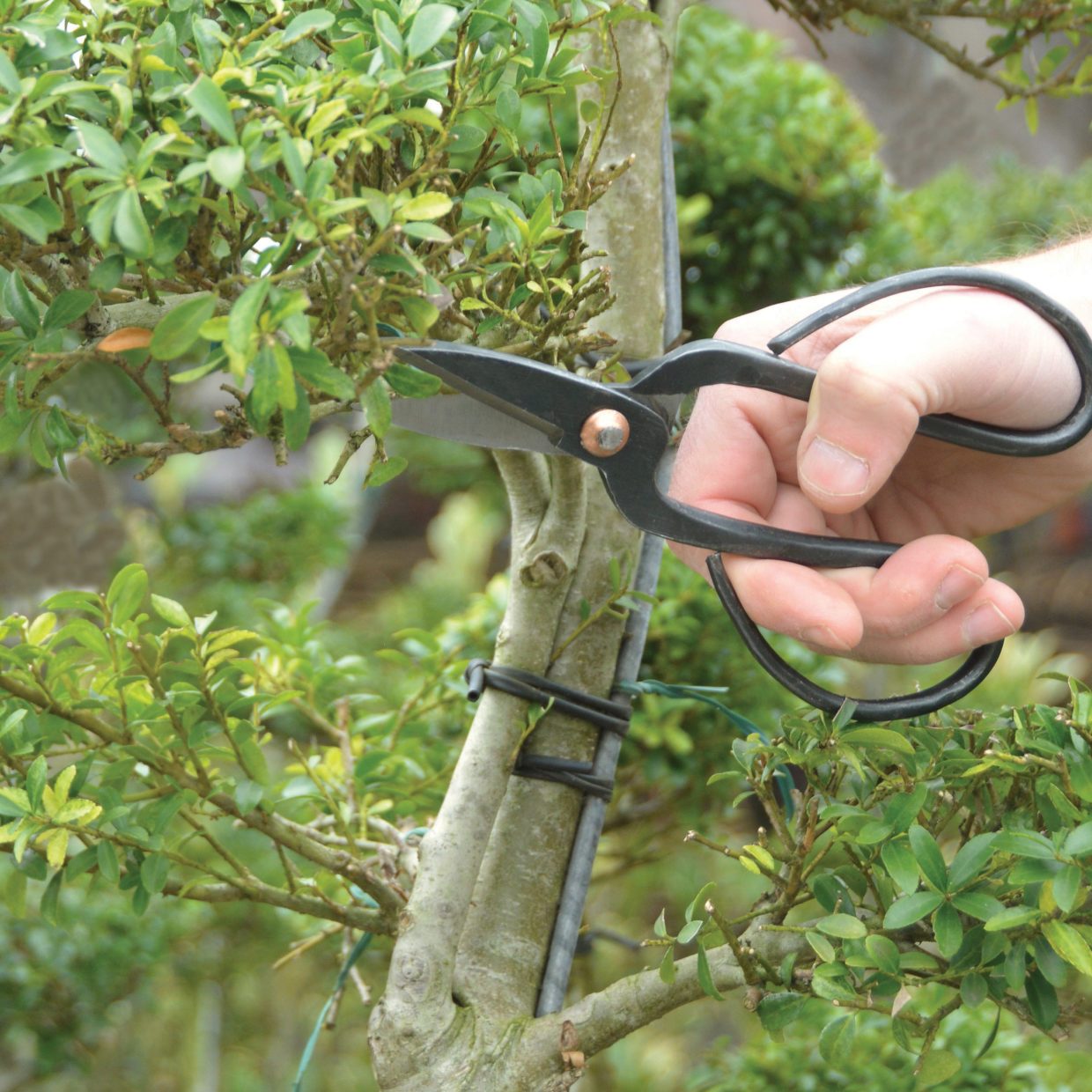
Of course, you don’t have to spend a lot of money on a bonsai pruning kit just for some great tools.
If you feel that you only need a set of really good shears then surely these are fine?
It’s worth carrying them in your car or keeping them near the tree if it is difficult to carry tools around.
Bonsai pruning shears are for the most part really useful for cutting into new growth to remove leaves and small branches that you can’t get at with your hands alone.
Large thicker bonsai trees will also require trimming by using a bonsai pruning saw.
Best brand of bonsai pruning shears?
For the most part you will find that the best shears are made in Japan.
But as long as they’re sharp and strong enough then I don’t think that there’s anything wrong with them being made here or anywhere else in the world for that matter!
The truth is, all of the bonsai pruning tools need to be strong, sharp and rust free if you’re to get the best out of them. I don’t see any point in picking up cheap tools because they will just end up damaging your bonsai tree or even worse – injuring yourself!
That’s why I recommend that you spend a little bit more on good quality shears than settle for cheap ones (you may still have to spend around $30-$40 though).
If you’re looking for a really good brand then I can advise that Titan tools in Italy make some of the best pruning shears on the market. But there are others too such as Felco, Knipex and Fiskars which are also well respected. My advice is to get a worthy shear that you can rely on.
Don’t settle for the cheapest tools and don’t go overboard either – it’s a tough balance!
If you do end up buying just some high quality pruning shears (or perhaps something more) then they may last you your whole life time.
Just remember; if you don’t use the best tools for the job, then you will be doing your bonsai pruning kit no justice at all.
Conclusion
When pruning bonsai, it is important to keep in mind that the art of bonsai requires maintaining a balance between nature and culture.
Prune too much or too little and you will be left with an unbalanced tree which can lead to unhealthy growth patterns.
There are many types of trees that make great subjects for bonsai but different styles require slightly different techniques.
For example, when trimming roots on a cascading style plant like ficus microcarpa ‘pindo’, it’s best not to remove more than one-third of its root mass at any time because this type of tree needs support from the soil as well as plenty of water so don’t go crazy!
The guide above extensively covers the art of pruning bonsai. We hope these tips helped
Before you go, read our care for bonsai post here. We give you more tips there.

